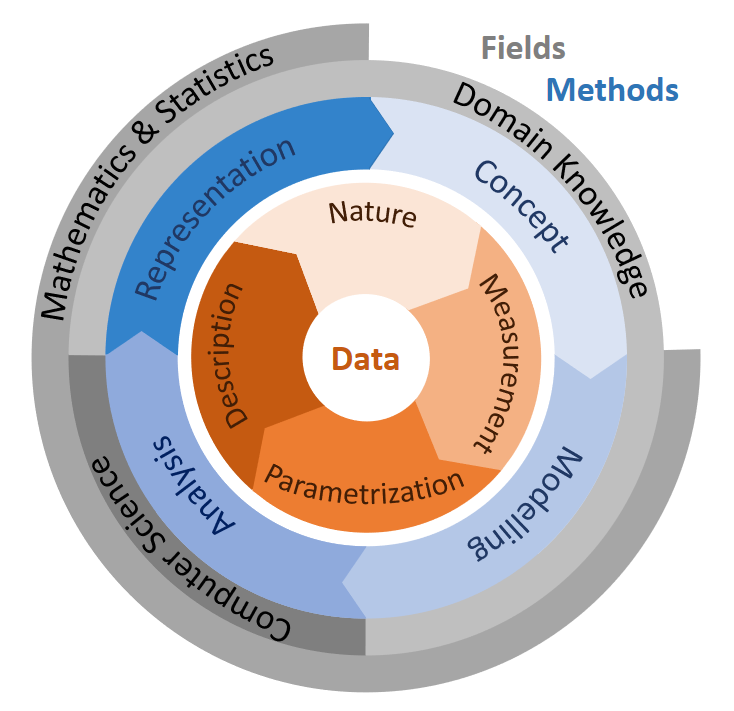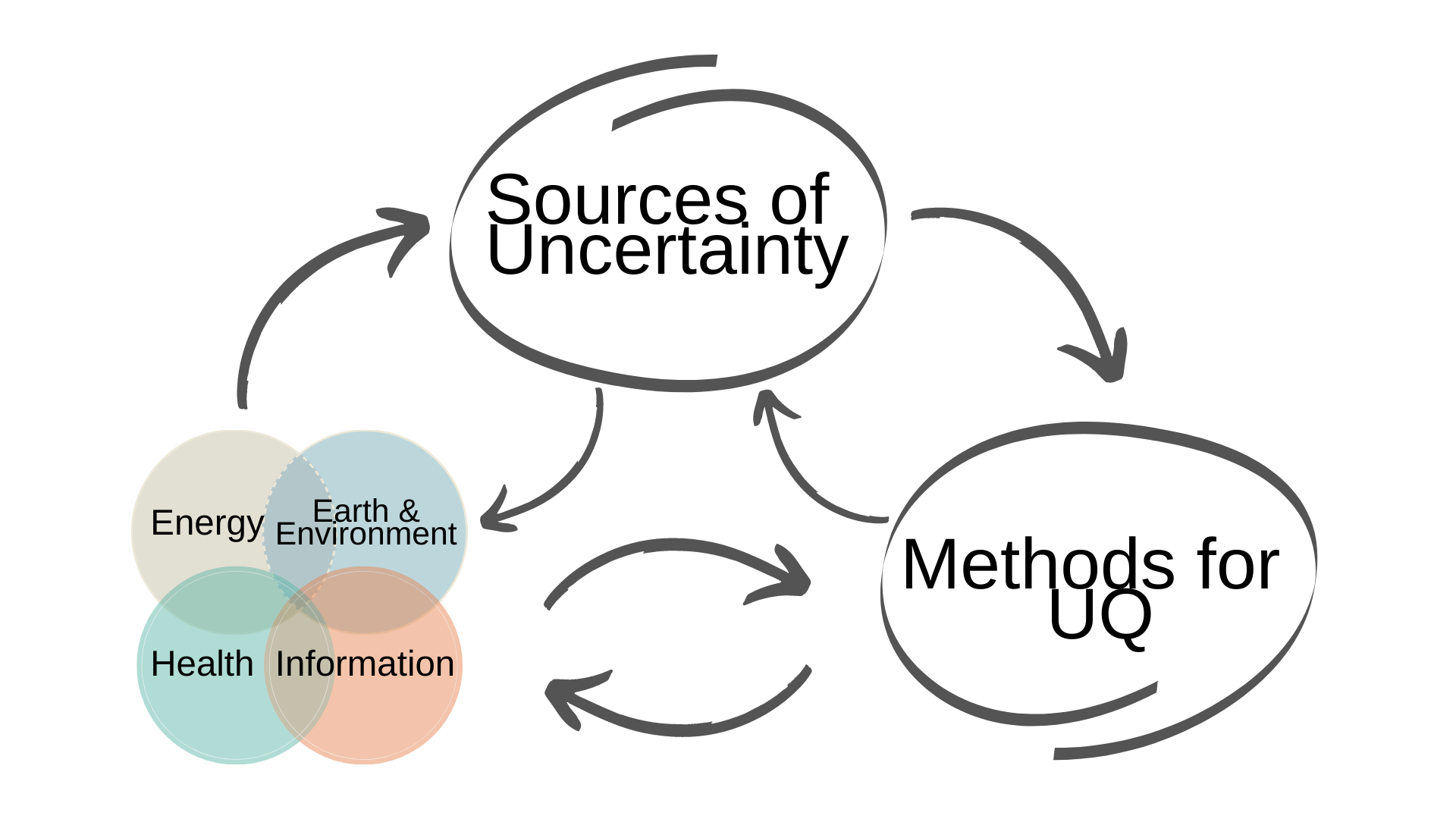About this book#
Welcome to the Uncertainty Quantification Dictionary (UQ Dictionary)!
For what purpose#

Fig. 1 The UQ Dictionary cycle summarizes dimensions of uncertainty with respect to its sources, domains and implication.#
The UQ Dictionary is a collaborative live document authored by members of the project “Uncertainty Quantification—from data to reliable knowledge” (UQ) from the Helmholtz Association. The goal of the UQ Dictionary is to provide a common language to facilitate communication and collaboration between the involved research fields.
More on the purpose of the UQ Dictionary
The UQ project connects researchers from four research fields—Earth & Environment, Energy, Health, and Information—among each other, with Helmholtz association data science experts, and with external university partners from mathematics and economics. The goal of the UQ project is to develop and apply methods for uncertainty quantification to field specific applications. However, different research communities may understand uncertainty in different ways which creates a barrier to interdisciplinary communication. Moreover, different fields may deal with different sources of uncertainty, making it difficult to identify common challenges for method transfer or unique problems that require method development. The goal of the UQ Dictionary is therefore to provide a common communication framework, thus facilitating interaction and cooperation between research fields. Specifically, the dictionary provides definitions of different forms of uncertainty in mathematical, application specific, and colloquial language. It describes methods of dealing with uncertainty developed and applied within the consortium. Finally, the dictionary provides descriptions of case studies within the different research fields in the consortium. Ultimately, we hope the dictionary facilitates collaboration, method transfer, and method development between different scientific fields.
How to read#
The UQ Dictionary is structured into three broad, interdependent branches: sources of uncertainty, methods for uncertainty quantification, and case studies. The aim of the UQ Dictionary is to provide cross-references between these branches which all serve as mutual starting points. We introduced a number of series which guide the reader from article to the next related one. To read the dictionary along one of these articles, follow the Next buttons at the bottom of those pages.

Fig. 2 Schematic representation of the three branches of the UQ Dictionary.#
More on how to read the UQ Dictionary
To properly understand and adequately treat uncertainties, one must investigate where and how they arose in the first place. Hence, the first branch introduces a framework to categorize the multitude of sources of uncertainty.
Based on the uncertainty type, various methods may exist to handle the specific problem at hand. Therefore, the purpose of the second branch is to provide an overview of potential statistical approaches, explain their main properties and link the interested reader to further readings. This branch deals, for instance, with uncertainty quantification methods for dynamical models, nonparametric Bayesian models, efficient study design under uncertainty and efficient sampling.
How well a method is suited for the problem at hand often depends not only on the type of uncertainty, but best practices of the discipline and their specific point of view.
The third section therefore contains case studies for each of the discipline-specific projects within the consortium. Each case study consists of a series of articles that detail the scientific questions of the project, the sources of uncertainty that must be dealt with, and methods for quantifying the various sources of uncertainty.
Who we are#
We are a consortium of domain researchers, statistical and mathematical methods researchers, and research software engineers who care about quantification of uncertainty. The UQ project connects nine universities and insitutes from across Germany (Figure Fig. 3). See here for more information about the participating institutions and their respective members.
Fig. 3 Map of participating institutions.#
How we did it#
To address the challenges of working together in a large, interdisciplinary research consortium, we tried out agile project management methods. In particular, the UQ Dictionary was developed within the framework of Scrum. We were driven on the one hand by hope for success, and on the other hand by curiosity, with an openness to failure. We accompanied the process scientifically and are planning a publication, which we will refer to here.
Contributors to Landing Page#
Jonas Bauer, Jordan Gault, Rui Maia
